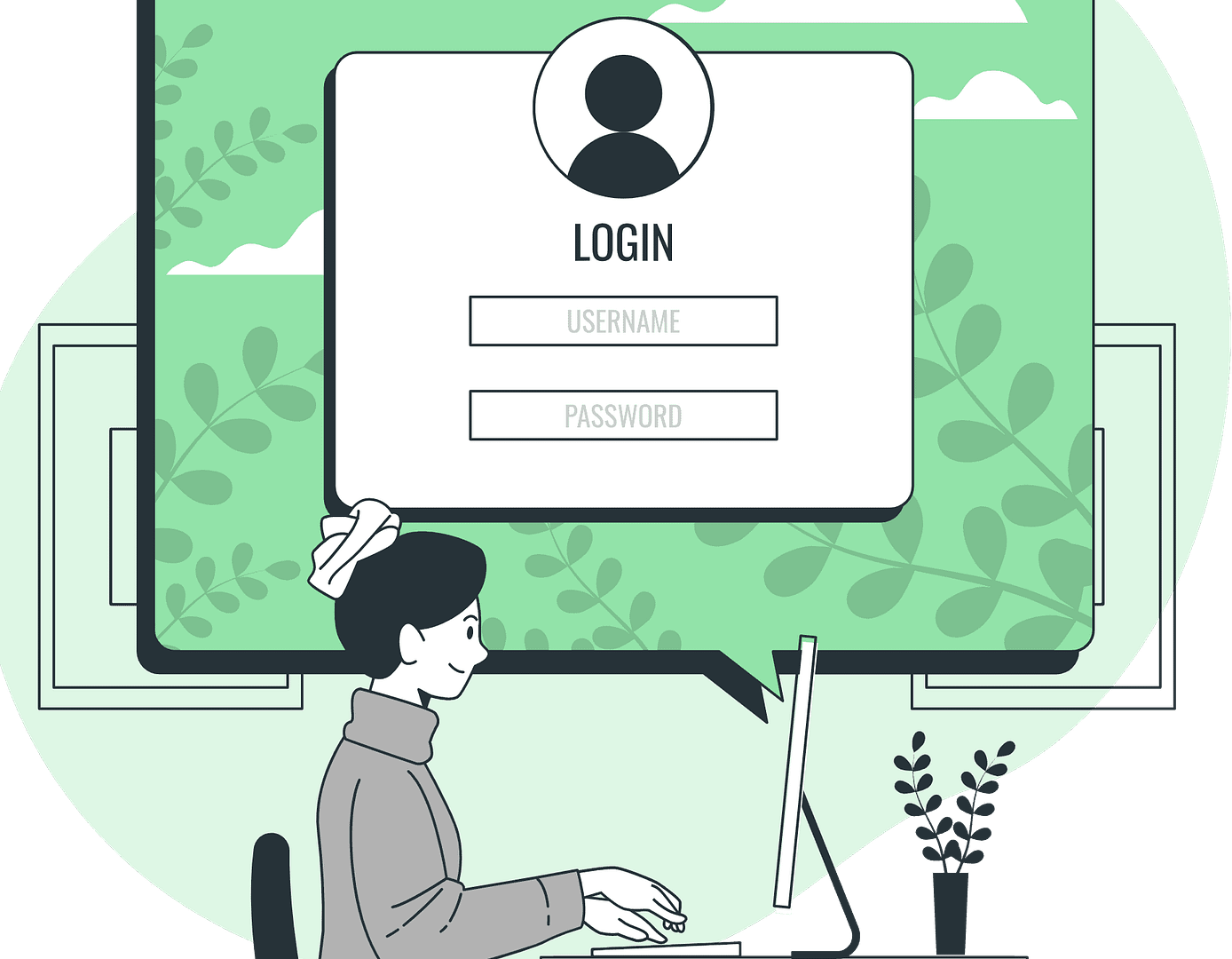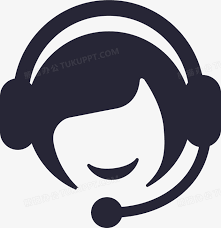
Posted on 1月 8, 2022
托福保分值得相信吗?都有哪些内容?
出国留学是很多人的梦想,但这不是一件容易的事。首先困扰大家的就是语言问题,大家虽然学了很长时间的英语,但是大家的英语能力还是不行。更别说想要出国留学还得参加托福考试,而这又是比较难的考试。在搜索托福相关内容的时候,大家会看到托福保分的相关广告,那么托福保分是什么?这值得相信吗?都有哪些具体内容?
1.教大家应试技巧
首先,托福保分的重要内容是教大家应试技巧。托福考试很早就有了,这是测试大家英语能力的专业考试,很多学校都认可这个成绩,这也是出国留学前必须要参加的考试。要知道,托福考试是标准化的考试,其题目相当成熟,这就给大家带来了机会。
想要在标准化考试中拿到高分数,就一定要掌握相关的应试技巧。大家也许在网络上看到了许多关于应试技巧的内容,但那些都是皮毛。托福代考机构内部的老师,往往参加过很多次托福考试,他们熟悉考试内容。而且经过多年的总结,他们已经汇总出一套专业的应试技巧,这也是机构提出托福保分的底气。
2.帮大家押题
既然托福考试的题目都是标准化的题目,那么想要拿高分,就少不了要押题。帮大家押题也是托福助考的重要内容之一。押题是很考验能力的,机构老师有着丰富考试经验,尤其擅长托福考试。他们一遍又一遍地做托福题目,逐渐总结出了题目的风格,而且他们押的题比较符合考试的实际情况。
机构在帮大家押题之后,大家要仔细研究这些题目,即使不是跟正式考试完全一样的题目,那也能帮助大家进步,帮助大家提高分数。
3.帮大家制定计划
很多人是自己准备托福考试的,虽然有的人自制力很强,但是大多数人都有惰性。而机构可以帮助大家进行自我管理,托福网考作弊的内容之一就是根据大家的实际情况,为大家制定严格的学习机会,并且监督大家实施。
大家可以参加机构的保分班,可以跟志同道合的人一起学习,共同进步。大家可以相互监督,按照既定计划逐步提分。
4.一对一进行辅导
不少人厌倦了班级上课,他们在课堂上没有心思学习,本来的相互监督却变成了相互影响。那么其实一对一辅导对他们更有效果。
一对一辅导是经过实践检验的成熟的、有效的教学方式,大家在辅导老师的帮助下,可以快速进步,快速提分。
托福保分宣传力度很大,在网络上到处都是相关的广告。保分其实就是给大家承诺最少能拿到的分数,这实际上是一种宣传手段。不过,听了保分宣传,大家也会变得更加有自信。保分宣传值不值得相信?这要看大家自己的想法。可以说机构介绍的技巧、内容等大部分是有效的,但这需要大家去实践、去应用才行,如果大家不努力,那么再强的保分机构也没用,关键还得看自己。
推荐阅读:
1、GRE保分有何优势?GRE保分考试怎么备考?》》》
2、留学代考咋操作?留学考试太难怎么办?》》》
3、托福保分为什么值得一试?》》》

Posted on 1月 7, 2022
proctoru怎么样?让澳洲留学生惊讶的Proctoru作弊究竟是什么?
朋友,你听过proctoru吗?proctoru怎么样?在留学之前,大家肯定都需要报考雅思和托福,雅思托福考试也是众多留学生在留学之前一个比较高的门槛之一,而且雅思和托福的成绩直接关乎自己能否上一所高质量高水平的学校,但是仅凭自己那点时间、那点词汇的积累根本不能够轻松将成绩提到那么高,所以就需要另辟蹊径,找到能够安全实现Proctoru作弊的考试方式。
- 安全度过线上考试
对这个proctoru监考的过程了然于胸,不仅可以proctoru代考的成功率提高到最大,还能做到有备无患,更好的应对留学后期可能会出现的问题。现在很多机构是可以提供考试辅助作弊系统的,也就是机构运用线上技术或者线下辅助等手段将托福作弊做到常规化,在某种程度上也就说明虽然托福作弊被发现是非常有风险的事,但是机构有能力让大家平安度过考试,以至于现在很多留学生都选择了这种抓住系统漏洞的方式进行考试并且顺利取得了好成绩。
- proctoru怎么样?如何实现安全作弊
proctoru是比较好作弊的,代考机构提供作弊方式,其中比较盛行的就是通过系统入侵的方式,机构掌握住你的电脑设备的操控权,也就是他能够远程控制你的电脑界面,并且成功操作Proctoru作弊不会被发现,这是一种比较安全的方式,而系统里的监控设备不会有所察觉,因为屏幕面前的人还是考生本身,电脑内部的监测系统与作弊系统是兼容的,不会被发现,这就是把握漏洞作弊的安全方式。
- 作弊成本
托福考试本身就不便宜,考试与备考的成本先不说,这是非常基本的花销,但是算算去国外求学时间上的安排,和国外各个学校的时间安排等,如果想要抓住好的时间去上学,当然通过托福的时间越提前越好,不然只能等,而等的这段时间成本是不可估量的,所以算起来加上一次就能通过的作弊成本是非常有被选择的价值的,性价比非常高,不需要大家对此犹豫不决。而且相对来说作弊是比较便宜的,不用再次挑战托福考试,帮助客户节约时间能够获得上自己心仪大学的机会。
- Proctoru作弊后果
一般来说在托福考试中作弊被发现就会被禁止考试一年的时间,在这一年的时间里是不允许参加各种有关托福的考试的,在进行其他的考试时也会被禁止,所以就需要大家在参与作弊时谨慎安排自己的设备和考试规划,虽然作弊是非常安全的,要做到万无一失还是要谨慎行事更好。因为该系统涉猎的考试范围比较广,这也涉及到国外高校考试,所以其它作弊被发现的后果也要看各高校的安排。
- 作弊系统对设备的影响
虽然在Proctoru作弊过程中会被机构远程操控设备参与考试,但是考试过程中和考试后期是对客户的设备安全不造成影响的,不会出现监控遗留等等影响客户的隐私安全,这点大家可以安心,而且不会恶意盗刷窃取客户的信息,合作双方的彼此信任建立在长期的合作关系上,机构赚的是为大家提供获得更好的成绩的钱,坚定彼此的选择很重要。

Posted on 1月 6, 2022
proctoru作弊有什么后果?监考严格吗?
为了跟上计算机互联网时代的发展,各个国家的教育行业也在不断的更新和提升各种教育资源和模式,许多科技公司也纷纷推出和研发了很多相关于教育行业配套的各种先进的配套设备和软件系统。让学校的教育教学方式更加具有灵活性、多元化与信息化。proctoru线上监考软件系统被很多高校以及各种权威考试机构进行应用,也收到了很好的效果。很多同学会好奇,这种系统监考严格吗?被判定proctoru作弊有什么后果呢?
01proctoru监考严格程度
proctoru监考是由专门为线上监考服务的高科技公司提供的一种软件。它对于考生的考试环境、考试时使用的设备、电脑内部各项软件的设置以及考生在考试时的各种行为规范都有非常明确的要求和规范。一旦准备或者设置不到位系统都会判定学生有proctoru作弊或者是考试行为不当的情况。
proctoru监考软件也完全实现了智能监考与实际人员监考的完美结合,考生考试电脑的另一端就有在实际考场上监考的老师。考生的各种行为都会在监考软件以及老师的监考下进行完成,增加了监考的严格程度,是学生们的成绩更加真实和有效。一旦被判定proctoru作弊,那么后果也是非常严重的。
01终止考试取消资格
考生如果在考试的过程中一旦出现一些不当的行为被系统或者监考老师判定为作弊,那么考试系统会自动停止考试,考生将不能再进行答题。相当于直接取消了考生的考试资格,这个后果对于考生来说是非常严重的。
02学校根据proctoru作弊的情况进行处罚
学生们不但要被取消考试资格,根据作弊的情节严重程度学校也会进行不同的处罚。情节较轻的会被取消当期的考试成绩,取消考试资格。情节严重的有可能会被学校开除或者是劝退处理。
03将proctoru作弊行为记录诚信档案
对于作弊的考生不是接受硬性的处罚就可以了,学校或相关考试机构还会将考生的这种作弊行为记录在考生的相关诚信档案中。这相当于考生的人生履历中有了一个不可抹灭的污点,是要跟随着考生到任何一个地方,贯穿他们整个的学习以及工作的,在这个过程中也会给他们带去很不好的阻力,后果和影响。
04移送司法机关
如果在考试期间或是在考试结束后,通过监考软件发现考生刻意的隐瞒以及针对考试和监考软件做出非常严重的损害考试公平公正公开的原则的事情,为学校及其他考生带来非常不好的影响的情况下,学校将查明整个proctoru作弊行为,并且报送给相关的公安机关及司法机关进行严肃的处理。
对于广大考生来说,无论是以哪种作弊方式被发现,所造成的各种后果和影响都是不能够轻松承担和承受的。所以在这里奉劝广大考生们,千万不要因小失大,得不偿失。如果不知道proctoru怎么作弊或者对于自己作弊的技术和手段没有自信,选择自己努力以及一些靠谱的方式才是最正确的。

Posted on 12月 31, 2021
proctoru可以作弊吗?在线考试可以找proctoru作弊么?
proctoru怎么样?随着国外疫情的爆发,很多国外高校为了防止疫情的扩散,大部分高校都会采用线上教学的方式来继续教学,同时考试也相应被挪到了线上来继续考试,其中很多留学生用到最多的就是proctoru,但是对于留学生而言,最大的困难其实还是考试看不懂的原因,一旦没有考好那么很有可能会导致自己的毕业证都拿不到,为了解决这种情况,最简单的办法就是找proctoru作弊,从而提高自己的分数。
很多留学生会疑惑,这种proctoru作弊会很容易吗?实际上操作起来并不是特别容易,因为是线上网络的原因,监考老师自然也是考虑到了各种作弊手法,因此想要自己来作弊并不是一件轻松的事情,那么就没有办法了吗?当然不是,因为还有专门针对这种情况的第三方机构,对于留学生而言,实在是不懂得考试的情况下,就可以寻找第三方机构,因为他们对于这种情况是专业的。
- proctoru如何作弊?
那么proctoru如何作弊的呢?首先proctoru代考机构会让留学生下载一种木马插件,当然了这种木马插件不是病毒,主要是用来隐藏在留学生的电脑之中,因为当proctoru开启之后,监考老师是能够打开电脑的后台管理系统进行监控,而这个木马插件就能够完美的躲过这种情况的查看,而且会伪装成另外一种程序防止被消杀,这样机构就能够顺利的通过远程控制来帮助留学生进行考试,而且也不会被监考老师发现。
- 物理手段也能防止
有些监考老师为了防止电脑做手脚,更会选择采用物理方式来进行监控,比如说要求留学生必须坐在摄像头前且无遮挡,还要拿一个镜子对着屏幕,这么看起来无解的物理方式似乎没有办法proctoru作弊了?那还是太天真了。第三方机构实际上会在考试前与留学生进行充分沟通,针对平时监考老师的习惯,同样也会采用一些额外的方法。
比如说可以让留学生准备另外一台有摄像头的电脑对准考试的电脑,然后通过微型的耳机进行传输,这样也是可以完全做到留学生在电脑面前自己考试的情况出现,让监考老师不会产生怀疑。
- proctoru作弊拥有着专业的人士
有些留学生就会担心,自己请了第三方机构之后,会不会出现写手专业知识不足的情况出现,实际上这种情况是完全不用担心的,因为机构在接受留学生委托之前,会先询问留学生的专业情况,然后会请专业的写手进行代考,而且全程都是自主作答,也就是说留学生根本不用担心考试所作答的答案是网上摘抄的,全是代考个人写作,这样就可以避免因为与网络上的答案重复而出现被老师发现的情况,并且代考结束之后,学习成绩没有通过及格线的情况下,是可以联系机构申请退款的,售后服务直接拉满,让留学生没有后顾之忧。

Posted on 12月 29, 2021
proctoru作弊的手段有哪些?后果是什么
作弊,英文单词为Cheating/plagiarize。作弊在中文中的解释为:通过不正当手段试图取得成果。因为疫情的原因,越来越多的留学英语考试采用线上考试的方式,而proctoru监考也越来越被更多的学校认可。有些想出国留学而英语成绩又没有那么好的同学就打起了proctoru作弊的歪主意。proctoru作弊的手段有哪些?如果被发现 proctoru考试作弊,后果是什么?严重吗?
第一:proctoru可以作弊吗?你有过proctoru作弊的想法吗?
提到作弊大家首先想到的应该是各位在学生时代应付考试的作弊行为吧,学生群体是作弊行为高发群体,学生阶段也可能是人生作弊次数最多的阶段。首先,学生时代考试居多,而许多学生因不认真学习而无法取得理想的成绩,这部分学生在成绩公布后有较大概率遭受父母老师的职责甚至打骂。因此,许多学生都有过作弊行为,那么你有过吗?
第二:proctoru作弊的手段有哪些?
那么广大学生群体都有哪些作弊手段呢?1.打小抄:打小抄是个技术活,学生们要将小抄写的足够清晰精致才能保证在考场上能够看的清楚并却不被监考老师发现。2.厕所传答案:许多学生会提前联系好成绩较好的学生,寄希望于对方做完题之后将答案放到厕所的某某地方,随后需要被传答案的学生就以上厕所为名义拿取写好的答案。
第三:proctoru怎么作弊?学生时代结束后还有机会吗?
答案是有的,学生时代结束后还有proctoru作弊的机会。教师资格证考试,计算机二级三级考试,英语雅思托福考试,会计考试,审计师考试,建筑师考试,诸多考试不乏有作弊的考生,就连驾驶证科目一考试都有五十多岁的老太太和老爷爷作弊,因此作弊行为在各位的日后生活中频繁出现。
第四:proctoru代考这种行为是否道德?
proctoru作弊是不正当的行为,这种行为必然违反道德,因此各位务必不要采取作弊这种方式应对考试。每一场考试都是对各位这一阶段学习成果的检验,如果各位通过不正当方式通过了考试是对命题人,监考老师以及考官的不尊重。不正当方式通过考试这种行为是对各位
自己的不负责任,也是对社会的不负责任,因此这种行为是严重违反社会道德的,应当坚决反对。
第五:proctoru作弊被抓的后果是什么?
在小学,初衷,高中的考试中不正当行为只是不道德和不遵守规则的表现,并不会各位个人发展造成重大影响,但是到了大学阶段的考试中不正当行为会严重影响各位个人前途未来发展。大学中的考试不正当行为一经查实将直接取消考试成绩按照挂科处理,必须重修,同时在学生档案中记录在案,这十分不利于大学生们日后的评奖评优评先进,包括入团入党等都会被严格限制。因此各位在义务教育阶段和高中教育阶段的考试不正当行为虽然对个人有影响但并不会影响日后发展,而在大学阶段以及以后的考试不正当行为一定要重视。
第六:proctoru review作弊应该怎么办?
proctoru review作弊如果发生,考生应当首先反思自己,主动向家长老师承认错误,及时补救,亡羊补牢,为时未晚。只有认真面对proctoru作弊这一现实,并及时寻求专业代考机构,比如mexam代考平台的帮助,才能避免下次再度犯错,才能认真对待日后的考试。

Posted on 12月 27, 2021
proctoru代考怎么做成功率最大?了解整个监考流程才更安全
为了应对新冠肺炎的影响,保证一些身处疫情区域的考生能在一个严格公正的环境下完成final网考,国外很多大学纷纷启用了proctoru监考系统。这个规则一出来,有人欢喜有人愁,欢喜的考生认为既然是在家使用自己的电脑考试,那proctoru作弊应该很容易。而愁则是真正了解proctoru监考系统的那部分考生。
那么,proctoru作弊到底简单不简单呢?下面就给大家讲讲proctoru整个监考流程。proctoru可以作弊吗?答案是肯定的,但是只有了解了整个监考流程,并进行针对性的避嫌,才能最大程度的保证proctoru代考的成功率。
- 安装Logmeinrescue小程序
需要采用proctoru的考试科目,学校会提前发邮件通知考生。考生注意关注自己的邮箱,如果收到相关通知,应该提前注册好proctoru的账户。然后在正式考试之前,考生先登录好proctoru,并在电脑上安装一个叫做Logmeinrescue的小程序。这个小程序的主要作用就是能够让监考老师远程操控考生电脑,帮助建立考试程序。当然,监考老师在操控学生电脑的时候,考生是能够看到的。这个小程序安装好之后,到了考试时间,考生的电脑会自动进入排队等待阶段,等待分派的监考老师。
2.操作Exam Onboarding
队列中的第一个监考老师会跟考生打招呼,告知考生排队等待已结束,可以开始考试。这个时候,监考老师就会远程操控考生的电脑,帮助考生操作Exam Onboarding,安装考试程序。以上两个操作都是proctoru代考的预防手段,只有等这两个过程完成之后,才会开始正式的考试流程。
3.检查考生信息和考试环境
proctoru监考流程第三步,就是考前的检查,这一过程中,监考老师会重点检查考生的学生证以及考试环境。检查学生证的目的是确保参加final考试的确实是考生本人,如果大家忘记带学生证,也可以用护照或者国外的驾照代替。而proctoru代考不容易的主要原因就是监考老师对考试环境的检查。在这个检查过程中,监考老师会要求考生旋转电脑摄像头展示考试区域,确保考生可见范围内不会有跟考试相关的材料和手机以及一些智能电子设备。
4.锁定电脑,开始考试
考前检查之后,考试就可以开始了。为了防止 GRE proctoru代考,监考老师会将考生的电脑锁定,阻绝其他电脑或平板连接到考试电脑,并确保考生只能操作考试电脑打开考试相关文件。然后,监考老师会告知考生考试系统的登录账号和密码,考生登录系统后才会进入正式答题界面。
5.全程监考,杜绝作弊
在整个考试时间内,监考老师全程守在电脑屏幕前,不管考生做什么,监考老师都能看到。一旦考生出现违规行为,立刻就会获得警告。另外,跟平常的考试一样,在家考试如果要上洗手间,需要提前向监考老师汇报,得到批准之后才能离开考试区域。而且,考生每一次离开都会被监考老师记录下来,如果离开时间过长或者离开次数过多,也会被判定为作弊。
看了以上监考流程,你还会觉得proctoru作弊简单吗?要想proctoru代考成功率最大,不仅不会因为 proctoru代考被抓,还能如愿拿到自己满意的成绩,可以咨询我们的网站客服。
Posted on 12月 24, 2021
好消息!12月23日雅思官方宣布新增102场考试!
2022年12月23日雅思官方微博发布了国内各地共新增102场考试的消息,一扫取消2022年众多线下雅思考点通知的阴霾!
具体增加了哪些场次,同学们赶紧来了解下吧。
【重庆】
重庆雅思机考中心新增12月28日、12月29日傍晚场雅思机考2场,现已开放报名。
【江苏】
江苏传媒学校雅思机考考点2月新增雅思、用于英国签证及移民的雅思机考场次共计24场,现已开放报名。
【北京、哈尔滨、山东、辽宁、沈阳、河北、山西、西安、天津、河南】
北京外国语大学、首都师范大学(科原大厦)、哈尔滨工程大学,哈尔滨工业大学、齐鲁工业大学、辽宁大学、沈阳师范大学、河北工业职业技术学院、山西医科大学(中都校区)、南开大学、天津大学、西北工业大学、西安交通大学、郑州航空工业管理学院,2022年2-6月新增雅思、用于英国签证及移民的雅思纸笔考试共计76场,现已开放报名。
如需报名考试或查找更多信息,请登录雅思考试报名官网ielts.neea.cn
所有新增场次均已开放报名,重庆地区的新增场次在12月28、29日,时间非常紧张,重庆的同学们一定要抓住时机赶紧报名。江苏传媒学校的新增场次是在2022年2月,而北京、哈尔滨等地区新增场次均在2022年2月到6月,因为疫情原因建议同学们最好就在本地报考,并且备考相对较长,同学们可以好好准备。
疫情变化影响着所有考试,雅思官方12月取消了42个考点,23日又公布了薪资102场考试。根据各地情况雅思考试考场信息更新很快,同学们务必要多多留意官方通知,或者关注Mexam雅思代考平台,我们会及时更新官方最新动态,帮助同学们快速调整IELTS online和线下雅思考试战略!
Posted on 12月 23, 2021
TOEIC最新通知:12月26日西安托业考延期至2022/1/26
原定于2021年12月26日举行的托业考试,由于近日各地疫情开始反复,特别是西安地区等地区疫情情况比较严重,为了保障考生们的健康,托业考试中国管理中心于2021年12月20日发布了西安托业考试最新通知,通知也更新了广东地区托业考试的防疫新要求。
通知中显示西安的托业考试将要延期至2022年1月16日举行,而广东地区托业考生目前未宣布延期。
西安地区的考生们请根据最新通知做好备考安排哦!
具体通知详情如下:
【西安 延期举行】
- 12月26日的托业考试暂时延期到2022年1月16日再举行;
- 托业考试中心将在12月30日前为西安考生办理转考;
- 如果是参加12月26日其它地区托业考试的考生,请于12月21日16:00前,将行程轨迹和健康码截图发邮件到客服邮箱:[email protected],以便尽快核实是否能够参加考试 。
【广东 防疫新要求】
- 广州健康码正常;
- 行程码无中高风险地区;
- 如果14天行程中有除广东省以外的其它城市的考生,需提供48小时内的的核酸阴性检测报告,纸质或电子版报告均可。

目前12月26日北京、杭州、天津、沈阳、合肥、郑州等地区托业考试防疫要求没有变化,以下考区的考生们也要注意当地托业考试防疫要求哟!


因为疫情变化,导致托业考试延迟,虽然不免让人感到沮丧,但是西安考生们一定要及时转化心情,好好调整自己的托业备考计划,做好更充足的准备。
各方面因素影响下,托业考试的消息更新速度较快,所有考生务必要主动关注官网消息,或者关注我们Mexam的新闻栏,这样才能保证考试万无一失。
我们 Mexam 平台有6年托业代考经验,可以为每位考生提供一站式托业代考保分服务。我们掌握托业考试的最新动态,可以及时跟据新动态调整托业服务,我们的考手资源丰富,可以安全高效帮您快速拿下托业证书,提升职场竞业实力!
如果您对托业考试还有其他疑问或者有托业代考、托业枪手助考的需求,欢迎联系Mexam客服咨询!
Posted on 12月 22, 2021
雅思官方公布,部分场次雅思考试取消至2022年3月
2021年12月雅思考试已经取消了30个纸笔考点、12个机考考点,而近日雅思官方又发布了关于2022年部分雅思纸笔考试考点、雅思机考、用于英国签证及移民的雅思考试和雅思生活技能类考试考点取消的通知。
由于各地疫情情况的变化,导致多地雅思考试场次取消,无疑是会让很多同学感到沮丧,也会打乱很多同学的考试与学习计划,但我们一定要及时转化情绪,积极调整雅思考试计划。也建议同学们最好报考本地雅思考试,不要跨省报考,不确定的因素太多。
雅思官方还官宣了将在2022年全球推出 IELTS online考试模式,这一消息就像一支强心针,给所有考生带来希望, 不必再担心疫情反复影响考试取消。
同学们现在只需当下做好考试准备,等官方正式通知,不论是可以正常参加雅思纸笔考试、雅思机考、雅思在家考,都能够准备充分,顺利考出好成绩!
以下是雅思官方发布的2022年1月、2月、3月雅思考试场次取消的通知:
- 2022年1月雅思纸笔考试取消场次

- 2022年1月雅思机考取消场次

- 2022年2月雅思纸笔考试取消场次

- 2022年3月雅思纸笔考试取消场次

已经报名的考生,考试费用将全额退还至你的NEEA账户。如还有疑问,可以联系教育部考试中心咨询。
目前来看,还没有取消考试场次地区的同学们,一定要抓紧时间赶紧报考。而如果雅思纸笔考被取消的地区的同学,则可以准备雅思机考。总之,能够尽早参加雅思考试就不要拖延时间,毕竟疫情影响下各地情况都不太稳定。
我们Mexam对雅思各类考试形式(如雅思机考、 IELTS online )都非常了解,可以保证一站式帮助同学们安全、省心、快速考出理想分数!









